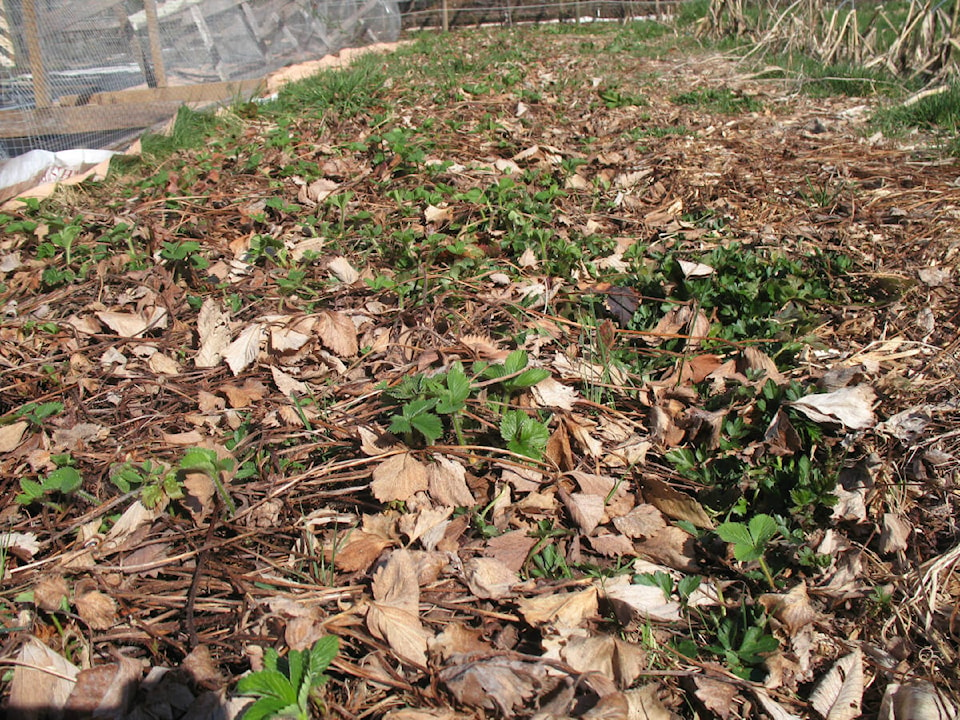By Mary Lowther
I have a firm belief that no garden is complete without a strawberry bed. This might have been learned as a toddler watching my mother nurture her crop, or may be more in the nature of a deep rooted cultural attitude, but I learned a long time ago that nurture/nature arguments take forever and this time of year I am too busy to spare the time. Besides, strawberries are delicious, and that is reason enough. The proof is that they are the crop most subject to predation; every unwelcome guest wants a nice, fresh strawberry, and why stop at one?
The starters I got from Brenda Bernhardt some years ago have done so well that I have to rejuvenate the beds, thinning out the spent plants to make room for propagation. I can look forward to a lot of healthy, climate adjusted plants producing a thousand sweet, juicy berries. Now all I have to do is find a way to prevent the myriad varmints from eating them first.
I’ve read that a dog will keep them out but old Monkey passed away, and he never chased anything smaller than an elk, and after the first time he chased one of those he gave it up entirely. Besides, any dog we had wouldn’t spend its nights in the garden, which is when evildoers get after my strawberries. This sounds like a job for David and his magic, opposable thumbs! Besides, he has experience.
Two years ago he made some terrific mesh covers to keep out birds, which should have worked if they hadn’t figured out how to wriggle through the tunnels dug by more earthbound predators. My proposed solution is to pull off the topsoil, lay down wire mesh, replace the topsoil, plant the strawberries and lay down David’s protective cages. He (naturally) objects that it sounds like a lot of work, and I secretly agree, but don’t see any better option. I have graciously offered to listen to any other solutions he can propose if this doesn’t work.
Time is running short, so we will be following the advice from The Modern Farmer, from the internet:
“This method has to be done prior to planting and is used to protect large areas containing many plants. It is the most common method used for vegetable gardens. For raised beds with wooden sides, put a layer of hardware cloth at the bottom of the bed before filling it with soil and staple it to the wood so the critters don’t weasel their way in on the sides. To protect beds on the ground, remove the soil to a depth of at least 12 inches and then line the entire area with hardware cloth. The hardware cloth should extend at least 12 inches aboveground as well to keep the animals from going up and over. Always overlap multiple pieces by 6 inches and bind them together with bailing wire to create a solid barrier.”
Since I was going to move the strawberries this year anyway the time is ideal for us to build them quite literally from the ground up.
